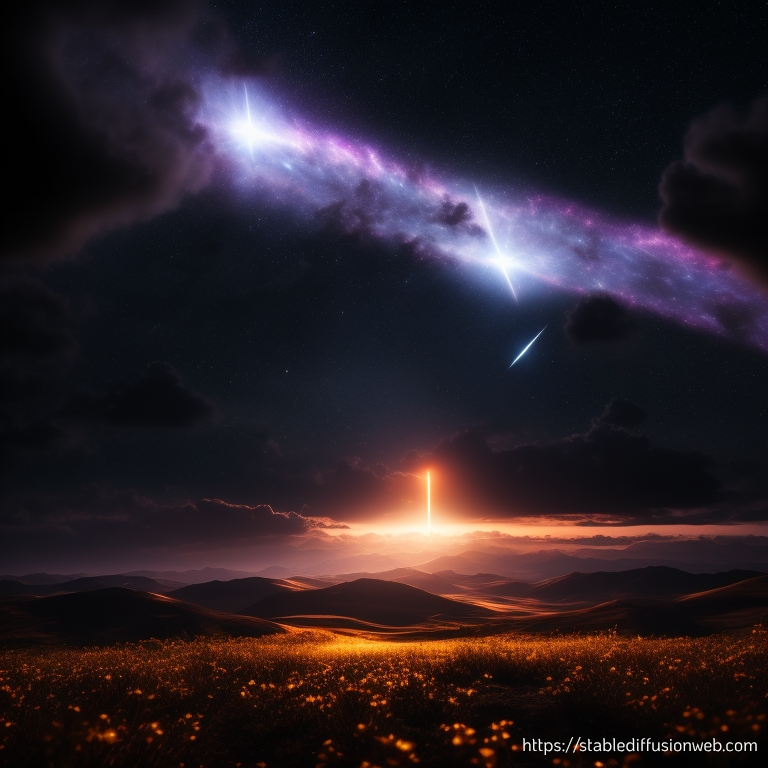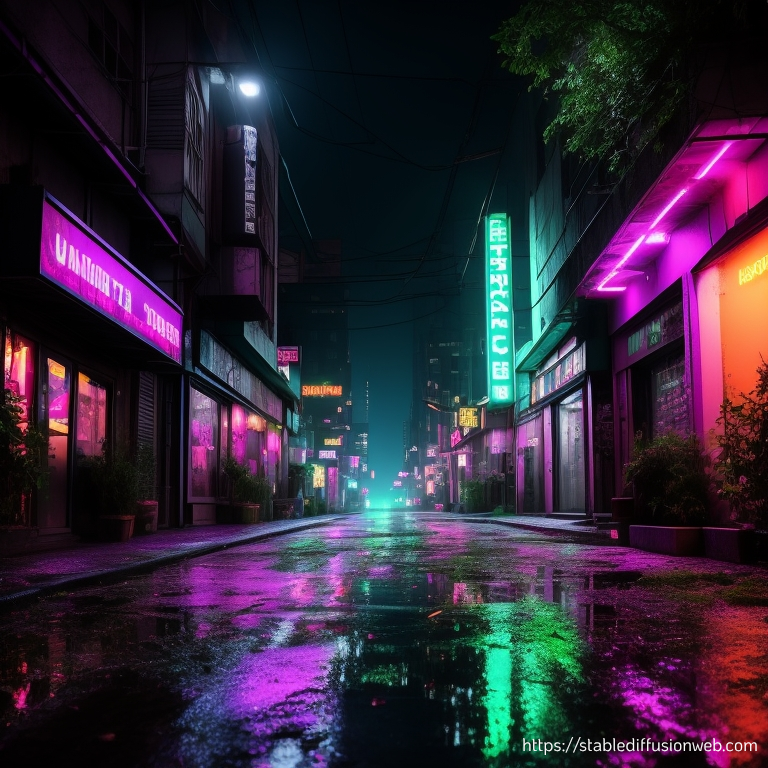A Comprehensive Guide to Stable Diffusion Prompts
Oct 24, 2025 • Filed to: AI-Powered Solutions • Proven solutions
Dr.Fone Basic:
Better Control for Your Phone
Manage, transfer, back up, restore, and mirror your device

At first glance, AI art seems like a simple enough thing. You just put in what you want your image to be, and the tool does all the rest. It doesn’t seem like creating mesmerizing AI images takes much skill, knowledge, or expertise.
However, when you try it yourself, you’ll find the process to be much more involved.
It’s not enough to just use a tool like Stable Diffusion and tell it to generate an image of a puppy, for example. You need to be highly specific and create the right prompt to get your desired image.
Take a look at this comprehensive guide to writing the best Stable Diffusion prompts and master the art of AI image generation.
Part 1. How to Structure Stable Diffusion Prompts

The key to getting good Stable Diffusion prompts is getting the structure right. You want to include all the relevant information but not make your prompts so long that they end up confusing the tool.
In a nutshell, that means that you don’t want to be overly specific about every minute detail. Rather, it means you want to guide the AI tool in the right direction by focusing on information that matters. Take a closer look.
Include Colors
Depending on the specific type of AI image you have in mind, the overall color of it could be pretty important. For instance, you might want to generate a picture of a bouquet of black roses. If your Stable Diffusion prompt simply contains text such as “a bouquet of roses”, black likely isn’t a color that would be included.
Therefore, you’ll need to specify the main color (or colors) you want in your image. Don’t worry, that won’t make your images monochrome. It will simply make them predominantly in the color(s) you’ve chosen.
Depending on the specific prompt for Stable Diffusion you’re using, the color might appear as an overall tone, or it might be used in some of the objects created in the image.
Add Lighting

In real-life and AI art, lighting plays a major role in how your images turn out. It’s lighting that helps you set the scene, create the perfect mood, and awaken an emotional response in the viewers.
Therefore, you’ll want to make sure that you specify the type of lighting you want when creating your Stable Diffusion image prompt.
You can use keywords like “cinematic lighting”, “natural light”, “dark”, “dusk”, “sunset”, “hard light”, and more to ensure that your AI-generated images carry just the right atmosphere. As a general rule of thumb, it’s in your best interest to play around with different keywords and see the different results you can get.
Make the Subject the Main Focus
When using AI image generators like Stable Diffusion, you should always place primary focus on your subject. It’s easy to get carried away with describing the background, for instance, focusing too much on details like the color of the background, how many objects there are behind your subject, and more.
Instead, use much of your prompt to describe the subject. For instance, if the subject is a person, you can use celebrity names to get their appearance right. Specify what the person is doing, how they’re dressed, and how they interact with other objects in the image. You can also go so far as to specify their eye color, for instance, or include their hairstyle.
Talk About the Medium
It’s always a good idea to mention your preferred medium when writing prompts for Stable Diffusion. The medium refers to the materials used to create a work of art. You can use keywords like “oil painting”, “photography”, “3D rendering”, and more to create the perfect image in just the style you want.
However, you’ll want to avoid including multiple mediums, as that can easily confuse the tool. Moreover, make sure that the medium and the art style match – after all, you can’t really get consistent, relevant results if you put “photography” as a medium and then choose the “impressionist” style in your Stable Diffusion AI prompts.
Use a Specific Style

Choosing a specific art style can have a massive effect on how your Stable Diffusion images turn out. Stable Diffusion style prompts can include keywords and key phrases such as “hyperrealistic”, “impressionism”, “pop art”, and more.
Moreover, when creating your prompt, on the right-hand side, you’ll see the option to choose your preferred style from a long list. Stable Diffusion gives you access to dozens of different art styles, but don’t worry if you don’t find the precise style you’re after. As mentioned, you can include the keyword in your prompt and simply select “none” from the list offered on Stable Diffusion.
Mention the Artist
If there’s a famous artist whose work you enjoy, the best thing you could do is include their full name in your Stable Diffusion art prompts. It’s the perfect way to modify your generated images and receive results in the exact style you like.
You could even take things a step further and mention two different artists. While it might take you a few attempts, you should be able to receive a work of art that combines both artists’ recognizable styles.
Of course, it’s in your best interest to use names of renowned artists like Monet or Van Gogh, as the AI tool will be more likely to produce your desired results.
Look at the Website You’re Trying to Mimic
To create the best Stable Diffusion prompt, sometimes, it’s enough to simply mention the website you’re trying to mimic.
DeviantArt, for instance, is one of the most popular websites where artists can come together and share their distinct works of art. Therefore, it would be a great website to mention in your Stable Diffusion image prompts to steer your creation towards a specific art style.
Other websites you could use include CGSociety, ArtStation, Carbonmade, and even Tumblr.
Talk About Resolution
Depending on how you word your Stable Diffusion art style prompts, you might not get precisely the image quality you were after. Many AI-generated images tend to be somewhat blurry, out-of-focus, or plain strange at times.
To avoid these issues, you’ll want to talk about resolution in your prompts for Stable Diffusion – especially when you’re writing Stable Diffusion prompts for realistic photos.
Mentioning resolution will help you make your images more detailed with a much sharper focus, so remember to use keywords and phrases like “high-res”, “high resolution”, “sharp focus”, “detailed”, and the like.
Add Tiny Details

To give more depth to your AI-generated images, it’s always a good idea to include more details to help you set the scene. For instance, if you’re creating Stable Diffusion portrait prompts, you could include details about facial expressions or emotions. Keywords like “happy”, “smiling”, “angry”, “furrowed brow”, and the like can be great for generating just the image you want.
You could even add details that simply impact the overall aesthetics of the image, “dystopian”, “mysterious”, or “gloomy” could be great pointers to the AI that perfectly modify your images.
Give Context
Creating the right context for your images is the key to getting high-quality results.
The thing is, AI tools like Stable Diffusion can’t read your mind. They provide results solely based on your input. Therefore, you might be left with subpar results if you don’t provide context for your images.
Always remember to set the scene and tell the AI precisely what to do. If you want an image of a puppy chasing a ball in a busy park, don’t just use a prompt that says “puppy chasing a ball”. Specify what you’re after.
Don’t Be Biased
It’s no secret that AI can be highly biased, producing stereotypical images even when nothing in your prompts tells it to do so. If your prompt reads “portrait of a blonde woman”, for instance, you’ll likely get an image of a caucasian woman, even though you’d never actually specified the ethnicity.
When writing Stable Diffusion artist prompts, make sure to eliminate biases by being clear and detailed. It’s the best way to avoid biased results.
Start With Clear Statements
Perhaps the most important thing you’ll need to remember is that clarity is the key. While it’s always good to add a few clarifying details and go into your preferred style, colors, and more, you don’t want to include any unnecessary information, especially not at the beginning of your prompts.
Too many descriptive adjectives, for instance, will more often confuse the AI rather than help it create the types of images you’re after.
Always start with clear, concise statements, add a few crucial details, and let AI handle the rest.
Part 2. Using Negative Stable Diffusion Prompts

One of Stable Diffusion’s most frequently overlooked features is the negative prompt. The negative prompt sounds exactly like an instruction to the AI on what not to do.
At first glance, it doesn’t appear like you’d get much use of it, especially if you’ve mastered the art of creating the best prompts for Stable Diffusion. However, it could just be the key to creating awe-inspiring images.
Negative prompts are a great way to remove unwanted features, whether they’re objects, art styles, or overall attributes. You can use keywords like “disfigured” or “extra limbs” to ensure your portraits, for instance, don’t appear creepy or alien-looking.
Part 3. Using Iterative Stable Diffusion Prompts

AI art isn’t perfect and rarely gives you the perfect results on your first try, so you’ll want to use iterative Stable Diffusion prompts. That means repeating the same prompt several times, only slightly tweaking it at each iteration.
In general, it’s best to start with a simple prompt containing only your subject, preferred medium, and overall style. Slowly introduce additional details, like the color or lighting. Start adding a few negative prompts. Continue this process until you get the results you want.
Part 4. Best Stable Diffusion Prompt Length

All AI image generators will have a limit on the number of words or characters you can use in your prompt. With Stable Diffusion v1, that limit is 75 tokens. Of course, that doesn’t necessarily mean you should always strive to use precisely 75 tokens.
On average, it’s best to keep your prompt between 10 and 60 words long. Too short, and it’s unlikely that you’ll get the type of image you want; too long, and you’ll probably just confuse the tool and again get unsatisfactory results.
It’s best to play around with different prompt lengths until you get precisely what you want.
Part 5. Best Stable Diffusion Prompt Examples

When considering the best Stable Diffusion prompts examples, remember that the tool will provide different results every time. Even when using the same prompt, you’ll get as many different results as the number of times you click on that “generate” button.
With that in mind, here is a list of the best Stable Diffusion prompt examples you could give a try:
- Colorful flowers in a glass vase sitting on a wooden table in front of a large window, modern, minimalist, photorealistic;
- Dystopian city on a rainy night, reflective puddles on the streets, purple and blue, steampunk, hyperrealistic, cinematic lighting;
- Wide-angle photo of a European castle on a cliff, blue sky background, clouds, photography;
- Close-up portrait of a cowboy, straw in mouth, dark, cinematic;
- Geese as dinosaurs running in a park, blue sky background, anime style;
- Pop art painting of Donald Trump with red lipstick;
- Black-and-white photograph of a bride sitting in front of a large window overlooking a pond, her back turned to the camera, photorealistic, mysterious;
- Pikachu holding a flamethrower, explosions in the background, cinematic lighting, digital art;
- Ariana Grande as Wonder Woman, detailed clothing, lighting in the background, full body, fantasy, gold, red;
- Impressionist painting of Tom Holland’s Spider-Man reading newspapers at a French cafe in a full-body Spider-Man suit;
- Sunset over tall mountains, detailed sky, birds flying in the distance, surrealist;
- Dragon atop a gothic-style castle, rainy night, fantasy, high detail, high resolution;
- Documentary-style photo of an abandoned house, soft lighting, photorealistic;
- Close-up of a cute gray cat with blue eyes, wearing a bowtie, art-style graffiti;
- Japanese garden landscape with bright lanterns, colorful, calm, watercolors.
Of course, you can always tweak these prompts by adding negative prompts, changing the style, or including more detail.
Conclusion
Creating the best Stable Diffusion prompts can take a bit of trial and error. It’s in your best interest to start simple, including only the basic information about the subject, your preferred medium, and style. Generate a few images using the same prompt, then start including additional details as necessary.
By the way, Wondershare Dr.Fone is about to launch a new AI wallpaper generator. You can use it to create high-quality Barbie images, too. Explore its amazing image-generation capabilities once the tool becomes officially available.
Dr.Fone Basic:
Better Control for Your Phone
Manage, transfer, back up, restore, and mirror your device
AI Solutions
- Text to Image
- 1. Best Free OCR Service Tools
- 2. How AI Portrait Generator Works
- 3. How to Use Stable Diffusion AI
- 4. Best PNG to Text Concerter Tools
- 5. Best Text-to-Image AI Generators
- 6. Best Text-to-Image Converter Tools
- 7. Top AI Text Image Makers
- 8. Top AI Art Generators from Text
- 9. Free AI Image Generators
- 10. Canva's AI Text-to-Image Generator
- AI Wallpaper
- 1. Boho Wallpaper for iPhone
- 2.Top Boho Wallpaper Generator
- 3.AI Wallpaper Maker
- 4.Aesthetic Bohemian Wallpaper
- 5.Online Tool for iPhone Wallpaper
- 6.3D Background Generators
- 7.Top AI Live Wallpaper Creator
- 8.AI Photo Background generator
- 9.Desktop Wallpaper Generator
- 10.Motivational Quote Wallpaper
- 11.Black Quote Wallpapers
- 12.Good Morning Life Quote Image
- 13.AI Image Prompt
- 14.AI Plot Generators
- 15.Stable Difussion Prompts
- 16.AI Art Prompt Tmplate
- 17.Minimalist Wallpaper for Phone
- 18.Best Scenery Wallpaper
- 19.Color Gradient Wallpaper
- 20.Cyberpunk Wallpapers
- 21.Sketch Wallpaper Generator
- Image to Image
- 1. Image-to-Image: You need to know
- 2. AI Art Image-to-Image Translation
- 3. AI Photo Apps in Graphic Design
- Best AI Tools List
- 1. Best AI Tools and Services [Full List]
- 2. Best 12 AI Anime Art Generators
- 3. Top 10 Text-to-Video AI Generators
- 4. Chrome Extensions for ChatGPT Users
- 5. Popular AI Art Generators
- 6. Best AI Text-to-Music Generators
- 7. Review of OpenAI’s DALL-E 2
- 8. Wonder AI Art Generators
- 9. Free AI Image Generators to Try
- 10. Top 10 AI Text Generators
- 11. AI Content Detection Tools
- 12. Best 3 AI Green Text Generators
- 13. NSFW AI Art Generators
- 14. Online AI Art Generators
- 15. NSFW in Stable Diffusion
- 16. NSFW in Discord
- 17. WhatsApp Template AI Generators
- AI Music

















James Davis
staff Editor